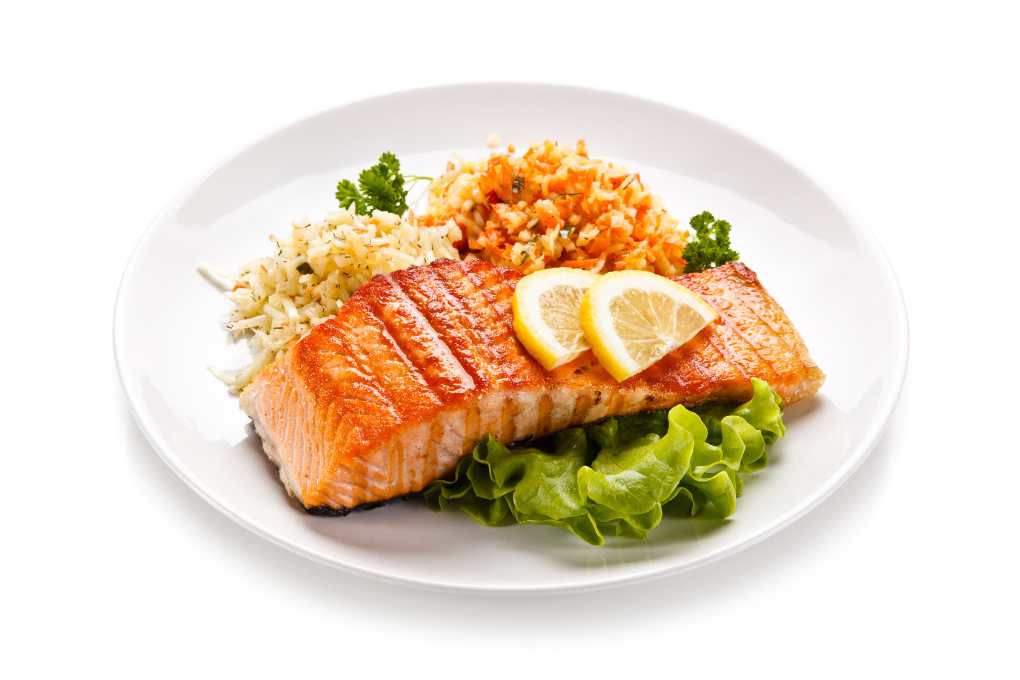Are you searching for an appetizing way to manage your cholesterol levels? Look no further than these top 6 fish varieties! Packed with heart-healthy omega-3 fatty acids and essential nutrients, these fish varieties will help lower cholesterol and provide essential nutritional support.

As part of our brand’s dedication to healthy living, we’ve carefully selected a selection of fish varieties that not only taste delicious but are also good for your heart. Ranging from salmon and trout to leaner options like cod and haddock, there is sure to be something suitable for every taste here!
Understanding Cholesterol and Its Influence on Health
Your liver produces the waxy substance known as cholesterol, which you can obtain through certain foods. While cholesterol is essential to body functions, high levels can raise your risk of heart disease and stroke. There are two forms of cholesterol: LDL (low-density lipoprotein) and HDL (high-density lipoprotein), with LDL often being considered “bad” as it accumulates in arteries, leading to blockages; while HDL acts to clear LDL from circulation.
Diet as a Means to Manage Cholesterol Levels
Maintaining a healthy diet is key to managing cholesterol levels. While limiting foods rich in saturated and trans fats is necessary, including foods that help lower cholesterol is also vital. Fish that are packed with omega-3 fatty acids have been shown to have positive impacts on LDL and HDL cholesterol levels, helping lower LDL while increasing HDL and ultimately decreasing the risk for heart disease.

Diets that Include Fish for Cholesterol Reduction
Fish is an excellent source of lean protein and essential nutrients, and one key benefit of including it in a cholesterol-reducing diet is its rich omega-3 fatty acid content, which studies have revealed to reduce inflammation, lower blood pressure, decrease triglyceride levels, improve blood vessel function and prevent blood clot formation. By regularly eating fish, you can improve cardiovascular health while managing cholesterol levels more effectively.
Fish Varieties Rich in Omega-3 Fatty Acids
Salmon: Salmon is a beloved choice among seafood enthusiasts for good reason. Rich in omega-3 fatty acids and an excellent source of protein, this delicious seafood makes an excellent addition to grilled, baked, or broiled meals alike. With its buttery texture that pairs beautifully with various seasonings and sauces, salmon makes the ideal choice for managing cholesterol levels!
Trout: One fatty fish packed with beneficial nutrients is trout. Not only is this freshwater species high in omega-3 fatty acids and other essential vitamins and minerals, but it has an extremely mild flavor perfect for grilling or baking, with endless variations to suit any taste, be it herbs or sauce. Trout makes an excellent addition to any cholesterol-reducing diet plan!
Mackerel: Mackerel is a mild-flavored fish rich in omega-3 fatty acids and often available canned, making it an easy and quick meal option. Mackerel can be enjoyed alone or added to salads, sandwiches, or pasta dishes; its meaty texture and distinct flavor make it a beloved seafood choice among its fans.
Fish Varieties Low in Saturated Fats
Cod: Cod is a lean fish with low levels of both fat and calories that still provides heart-healthy benefits. Its mild, delicate flavor makes it an ideal candidate for various cooking methods; baked, grilled, or pan-seared cod makes an easy addition to any cholesterol-reducing diet while pairing well with vegetables and whole grains for a nutritious yet filling meal.
Haddock: Haddock is another lean fish low in fat and calories that is great for cutting cholesterol levels while enjoying its benefits. It features a mild, slightly sweet flavor that pairs well with many seasonings and sauces and can easily be baked, broiled, or pan-fried to provide you with cholesterol-friendly meals. Including haddock in your diet is one way of reaping its many rewards while simultaneously safely managing cholesterol levels.
Tilapia: Tilapia is an easy and tasty protein source, low in both fat and calories. A popular choice among many for lean protein consumption. Tilapia can be cooked using any method, from grilling, baking, or sautéing to marinades or spices that enhance its flavor—perfect for pairing with vegetables as side dishes or added to tacos or salads! Tilapia is an excellent base ingredient.
Cooking Methods for Cholesterol-Friendly Fish Dishes
When it comes to cooking fish for cholesterol-friendly dishes, there are multiple approaches you should consider. Grilling, baking, and broiling are great methods of cooking that preserve natural flavors while limiting added fats; steaming and poaching also preserve moisture and tenderness, offering delicious yet heart-healthy alternatives compared to frying or breading. By opting for these methods instead, you can enjoy delicious meals without endangering your cardiovascular health. Fish is an integral component of a balanced meal plan and should be included as such in every balanced meal plan.

Integrating fish into a nutritious meal plan is easier than you might think. Aim to incorporate at least twice weekly, to reap its full benefits, and pair your meal planning around fish with colorful vegetables and whole grains that provide an array of vital vitamins, minerals, and proteins while adding flavor and texture. Experiment with various herbs, spices, or sauces for an unforgettable dining experience!
Other Lifestyle Changes to Complement a Fish-Centric Diet
While including fish in your diet can have a beneficial effect on cholesterol levels, other lifestyle changes may also help. Exercise, maintaining a healthy weight, quitting smoking, and limiting consumption of processed foods, sugary drinks and alcohol will all support efforts to regulate cholesterol. By adopting an integrated approach to health, you can maximize its effects.

Incorporating Fish Varieties Into Our Diet for Better Heart Health
Conclusion: Incorporating fish varieties into your diet is an irresistibly nutritious way to manage cholesterol levels. From salmon’s delicious flavor and versatility to trout’s versatility or cod or haddock’s mild taste, there is plenty to choose from! By regularly eating omega-3-rich and low-saturated-fat fish, you can increase cardiovascular health while decreasing the risk of heart disease. Take control of your heart health today with these flavorful fish options!








